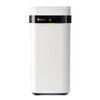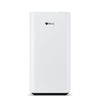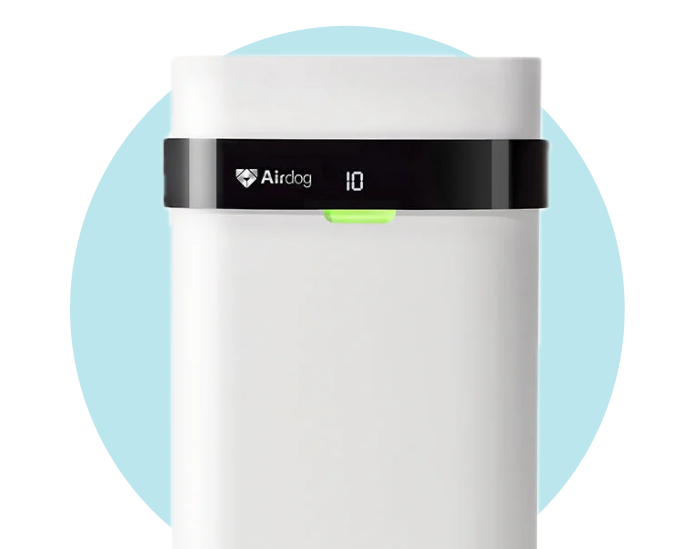Ozone might sound like a good thing. After all, it protects us from UV rays in the upper atmosphere. But did you know that it's a harmful pollutant at ground level and indoors? The good news? Modern technology allows us to remove ozone from air effectively. If you’re wondering how to remove ozone from air safely and efficiently, this guide breaks it all down and shows you what works—and what doesn’t.
What Is Ozone and Why Is It a Problem Indoors?
Ozone (O3) is made up of three oxygen atoms. That extra atom makes it unstable and highly reactive. While it’s vital in the upper atmosphere, at ground level it becomes an irritant. Indoors, ozone is often a by-product of common appliances and even some air cleaners.
Exposure to ozone can trigger adverse health effects. Even low levels may irritate your lungs, eyes, and throat. In higher concentrations, ozone poses more serious health risks like respiratory inflammation, asthma attacks, and long-term immune system damage. This is especially concerning in enclosed indoor environments where airflow is limited.
Common Indoor Sources of Ozone
-
Ionizing air purifiers that emit ozone
-
UV light devices and facial steamers
-
Photocopiers and laser printers
-
Certain cleaning products containing reactive chemicals
-
Electrical discharges from old or faulty wiring
These devices increase indoor air pollution by releasing ozone into confined spaces. Because ozone is a gas, it mixes evenly throughout the room, making ozone removal more urgent.
Ozone Indoors vs. Outdoors
Outdoor ozone often enters homes during hot, sunny weather, but indoor pollution sources can elevate ozone concentrations beyond outdoor levels. Since indoor air lacks the natural dispersion of outdoor air, ozone gets trapped and accumulates over time. That makes indoor air quality a major concern for health-conscious households.
Even seemingly harmless electronics, such as laser printers and some air cleaners, contribute to indoor ozone emissions. Combined with limited ventilation, these sources increase the risk of prolonged exposure.
In workplaces and modern, tightly sealed buildings, this buildup can be even worse. HVAC systems often recirculate air, and unless they’re equipped with carbon filters designed for ozone removal, they may redistribute pollutants rather than eliminate them. This is especially problematic for individuals with asthma, respiratory issues, or heightened sensitivity to air pollutants.
Can Ozone Be Removed from Air?
Yes, but not with just any air cleaning method. Ozone is a gas, so you need a system specifically engineered for gas-phase pollutant removal. Traditional HEPA filters are designed for particulate matter, not reactive gas molecules. Effective ozone removal depends on chemical filtration processes like adsorption or catalytic decomposition.
Why HEPA Filters Won’t Help
HEPA filters are great for capturing airborne particles like pollen, pet dander, and dust. However, they offer no defense against ozone molecules. Since ozone is much smaller and behaves differently than particulates, it easily bypasses mechanical barriers. Relying on HEPA alone won’t reduce ozone concentrations.
To truly improve indoor air quality in ozone-heavy environments, HEPA must be paired with activated carbon or other ozone-targeting filters.
Best Filters for Ozone Removal: Activated Carbon
Activated carbon is widely regarded as one of the most effective tools for ozone removal. Its ultra-porous structure traps ozone molecules and allows chemical reactions that convert ozone back into oxygen.
How It Works:
-
Ozone molecules contact the carbon surface
-
The unstable third oxygen atom detaches
-
The remaining two oxygen atoms form O2, safe, breathable oxygen
This makes activated carbon filters ideal for environments with high ozone concentrations, especially homes using electronics or UV appliances.
What Is Activated Carbon Made From?
Activated carbon is typically made from natural sources like coconut shells, wood, or even coffee grounds. These materials are heated at high temperatures in a low-oxygen environment, creating a highly porous structure that enhances adsorption.
The activation process is crucial because it significantly enhances ozone removal efficiency. High-quality carbon filters can outperform cheaper alternatives in both speed and capacity.
How Effective Is Activated Carbon at Removing Ozone?
Studies from National Taiwan University and other journals have reported ozone removal efficiencies ranging from 60% to 90%. Results depend on factors such as the type of carbon, pore structure, and contact time with the air.
The longer the air passes through the activated carbon, the more ozone molecules it can neutralize. For consistent performance, these filters should be replaced or regenerated regularly.
What About Spent Coffee Grounds?
Surprisingly, spent coffee grounds can aid in removing low-level ozone. DIY enthusiasts often place bowls of dried coffee grounds in areas where they experience problems. While not as effective as activated carbon powder, coffee grounds still offer some adsorption capabilities due to their organic structure.
Spent coffee grounds can also be used to supplement commercial air cleaning methods or as a budget-friendly interim solution.
Can Air Purifiers Help with Ozone?
Yes, but only specific air purifiers designed for ozone removal. Many conventional air purifiers emit ozone as a by-product, especially those using ionizers or UV light. To truly reduce indoor ozone levels, look for models that:
-
Use activated carbon or equivalent filters
-
Are certified to reduce ozone emissions
-
Do not generate ozone as a by-product
Air purifiers that meet these standards can significantly improve indoor air quality without introducing new risks.
Avoid These Types of Air Cleaners
Some air cleaning technologies can do more harm than good. Avoid the following if you’re concerned about ozone:
-
Ozone generators marketed as purifiers
-
Ionizers that lack ozone-neutralizing capabilities
-
Electrostatic precipitators without carbon filters
These air cleaners can elevate ozone concentrations indoors, contributing to air pollution rather than solving it.
It's also important to note that devices that rely on ultraviolet light or produce a chemical scent often suggest reactive processes that could emit ozone. Always check if the product complies with safe ozone emission limits before purchase. Choosing poorly designed or uncertified air cleaners may worsen indoor air quality instead of improving it.
The Airdog Advantage: Purifiers That Don’t Emit Ozone
Airdog air purifiers use patented TPA technology to destroy air pollutants without emitting ozone. Unlike ionizers or UV-based units, Airdog systems are designed with human health in mind, offering ozone-free purification for sensitive indoor environments.
They neutralize volatile organic compounds, mold spores, bacteria, and other air pollutants while keeping ozone concentrations at safe levels. Plus, Airdog’s washable filters reduce waste and long-term maintenance costs.
Are There Natural Ways to Remove Ozone?
Yes, natural ozone removal strategies do exist, though they are slower and less precise. Options include:
-
Ventilation: Open windows and use exhaust fans to exchange indoor air with cleaner outdoor air (when outdoor ozone is low)
-
Plants: Some indoor plants may absorb small amounts of ozone
-
Bake-out: Heat the space, then ventilate to accelerate ozone decay
While helpful for reducing background levels, these methods won’t match the efficiency of carbon-based filtration.
Why Indoor Air Quality Matters
Indoor air quality is essential for overall well-being. Poor indoor environments can lead to headaches, fatigue, asthma, and long-term respiratory issues. With more people spending time indoors at home and at work, controlling air quality, including removing ozone, is essential for maintaining good health.
Elevated ozone concentrations impact a range of aspects, from physical health to cognitive function and sleep quality. That’s why ozone removal should be part of your broader indoor air strategy.
Improving indoor air quality can also enhance productivity, reduce sick days, and create a more comfortable living or working space. If you're managing an office, a classroom, or your own home, investing in effective ozone removal and clean air systems supports better health outcomes for everyone who spends time in that environment.
Final Tips for Ozone-Free Living
-
Avoid ozone generators or any product that advertises ozone as a feature
-
Choose certified ozone-free air purifiers with activated carbon filters
-
Use low-emission electronics and avoid unnecessary chemical cleaners
-
Keep air moving with ceiling fans or HVAC systems
-
Monitor air quality with sensors if available
Invest in ozone removal now to protect long-term health. AirdogUSA provides a safe and effective way to purify indoor air without contributing to the problem.
Learning how to remove ozone from the air is key to protecting your health. Start by identifying sources, ventilating properly, and choosing smart filtration. Airdog air purifiers offer a proven, ozone-free solution for anyone serious about cleaner indoor air.








